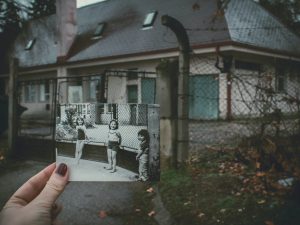How to Improve Relationships By Knowing Your Attachment Style

Our first relationships profoundly shape how we connect with others. A baby’s earliest lessons teach whether to depend on an important person for comfort and acceptance, or whether to expect distress, disconnection or shame.
An infant begins life learning if important people can be good sources of comfort and safety. A baby may learn that a close relationship is a source of emotional calm and support. This calming connection is what psychology calls secure attachment.
With secure attachment, a baby’s mind and nervous system grows around ideas like:
- You’re lovable as you are
- You are important to me — you are valued
- You are worth protecting
- You are worth understanding
- You’re safe with your loved one
These ideas become ingrained in the person’s beliefs and nervous system into adulthood.
What if the baby often feels unsafe, distressed, or misunderstood? This child may discover a close relationship is a source of worry and distress. The relationship keeps triggering the body’s survival response to danger. The young person may struggle to manage a constant state of alarm. The mind and nervous system may develop around thoughts and feelings like:
You’re not good enough to keep safe or protect
You’re not important — you have little value
You are not worth anyone’s understanding or soothing
You must learn to live with insecurity
You must live with feeling unsafe with your loved one
Psychologists call this kind of relationship insecure attachment. We call this type of childhood distress, attachment trauma.
Life Lessons from Secure Attachment
If your bond is secure, you learn what it feels like to be in a relationship where safety and stress relief are priorities.
Secure attachment also teaches you how a relationship with a trusted partner helps you feel calmer in dealing with life. Healthy relationships help people manage, or regulate emotions. With a partner who responds in a healthy, consistent way, you learn that you are never alone and can weather any storm of emotions.
With insecure attachment, you may learn you cannot trust a relationship to be a safe place to ask for what you need. Instead, you may seek ways to cope with a nervous system that is always on high alert. Or, you may find yourself shutting down to numb painful thoughts and feelings that you can’t hold or comfort in a relationship.
Therapists and psychologists now use categories for different degrees of emotional security in relationships. We call them attachment styles. Learning about them can help you understand yourself and the kinds of connections you might explore.
As a trauma-informed therapist, I work to establish secure attachment, because it’s the ideal model for the basis of any healthy relationship. Secure attachment is something you can learn and develop, even if you didn’t start out with it.
These are the four different attachment styles, and how they form. Understanding them can help you discover healthier ways to connect.
Four Attachment Styles
- Secure – autonomous
- Avoidant – dismissive
- Anxious/Insecure – preoccupied
- Disorganized – unresolved
Secure Attachment
- Do you generally feel close to others?
- Are you comfortable with closeness, and also with independence?
- Do you feel you communicate effectively and resolve conflicts as they arise?
- Do you feel like you have fairly stable relationships?
- Do you trust your partner?
- Do you feel safe in being vulnerable with your partner?
If you grew up with a secure emotional bond, your parents or caregivers were good-enough at being consistent. No one has a perfect childhood. Secure attachment allowed you to feel safe and protected. You felt accepted. You knew how it felt to have someone important be emotionally present with you.
You learned that if you became upset, you felt seen. Your important person made your relationship a safe place to process your distress until things returned to normal. In general, you felt secure.
As an adult, you are likely to become close with others more easily, and develop relationships that feel good. You are comfortable with closeness but also with independence. Your emotions feel tolerable.
Avoidant (Dismissive) Attachment
- Do you feel closer to others when you’re away from them?
- Do you feel the urge to pull away when your partner is seeking intimacy?
- Do you distance yourself from stressful situations or conflict?
- Do you feel emotionally removed from others?
Some babies and children had to depend on a caregiver who was emotionally unavailable or unaware of their needs. Perhaps crying was discouraged and you felt you had to “grow up” quickly.
As an adult, you may value your independence most. You may feel uncomfortable depending on someone, or being depended on by others. When presented with opportunities for closeness, you may pull away. You may not seek out relationships because you feel like counting on others is unsafe.
Anxious/Insecure (Preoccupied) Attachment
- When you and a loved one disagree or argue, do you feel overwhelmed or extremely anxious?
- If the other person needs a break, do you pursue them until they give in?
- Do you feel the need for lots of reassurance in a relationship?
- If your partner is away, do you question their love for you?
Your childhood may have included a parent who at times, responded well to your needs, yet at other times, was not present for you. Maybe one or both parents became stuck in their own anxiety, and may have responded in hurtful or critical ways. You may have grown up feeling insecure, uncertain of what treatment to expect.
As an adult, you may find you need a lot of reassurance and responsiveness in a relationship. You may become overly dependent on your relationships to feel okay. When the person you care about is gone, you may feel heightened anxiety.
Disorganized (Unresolved) Attachment
- Do you crave emotional intimacy, but also feel it’s safer to be on your own where you won’t get hurt?
- Was your primary caregiver abusive?
- Did your primary caregiver show love one minute and abuse the next?
Disorganized attachment can be a combination of avoidant and anxious attachment styles. Perhaps your caregiver was frightening, abusive, or behaved toward you in inappropriate ways. You may have felt afraid of them. They were not present for you.
Yet as a child, your instincts led you to believe that you should be loyal because they were your parents. You may long for closeness, but also fear it. These experiences can lead to inconsistent or confusing actions and relationships.
Disorganized attachment is the primary style for survivors of complex developmental trauma.
Attachment Styles and Trauma
Any style of attachment — other than secure attachment — can be traumatic.
The ability to regulate one’s emotions isn’t built in. We learn a lot about managing emotions through our relationships. These lessons become ingrained throughout childhood, and practiced throughout life.
What is emotional regulation? It’s the ability to ride the waves of life’s ups and downs, to deal with change, and create a safe space to share emotions in healthy relationships.
Secure attachment makes learning skills for emotional regulation a lot easier. Emotional regulation skills often come harder to those with an insecure attachment style. Living with overwhelm and a sense of danger may lead to a state of hyperarousal (being on high alert) or hypoarousal (becoming numb) as means of protection. This is what we call dysregulation. These are states of unmanaged emotions and little sense of wellbeing.
Without a secure connection to help manage emotions, continued distress can cause more trauma. Unresolved distress can lead to the use of substances in attempts to manage emotions.
Not Secure? Not Your Fault
You adopted your primary attachment style as the best way to cope with your situation. If you align with an “insecure” attachment style, it’s not because you chose wrong or did anything wrong.
Your attachment style formed as your best means of self-protection and survival. No matter what, I can confidently tell you, based on your circumstances, you did the best you could.
Healing Through Emotionally Corrective Relationships
Through therapy and the experience of emotionally secure relationships, there is healing! The road to secure attachment can start today by finding a trauma-informed therapist.
A therapeutic relationship is sometimes called an emotionally corrective relationship. That’s because secure attachment is one outcome of good therapy. A trauma-informed therapist is deliberate about building a secure relationship. Trauma-informed therapy enables a person to then take those skills outside into relationships with partners, children and friends.
No Matter Where You Start, Secure Attachment Is Possible for You
No matter what your current attachment style is, secure attachment is possible for you. You can learn, practice and develop new ways to connect through self-awareness, therapy and healthy relationships.
Learning about attachment can begin a journey of self-compassion, healing, and moving towards a more secure attachment style—which ultimately leads to healthier, more rewarding relationships.

In this Webinar: Sparked by Bowlby’s original insights, attachment research has revolutionized our understanding of human development, the internal world, and the consequences…
Resources
- Psychologist Mary Ainsworth’s Strange Situation Classification (SSC) assessment technique investigated how attachments might vary between children
- From Psychology Today: How Your Attachment Style Impacts Your Relationship
- Loving a Trauma Survivor: Understanding Childhood Trauma’s Impact On Relationships
- How to Trust in a Healing Relationship as a Trauma Survivor
- Healthy Relationships Matter More than We Think
- How Mr. Rogers helped to create secure attachment









